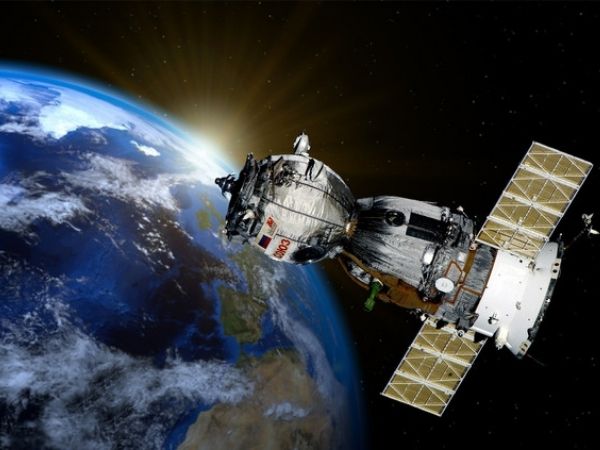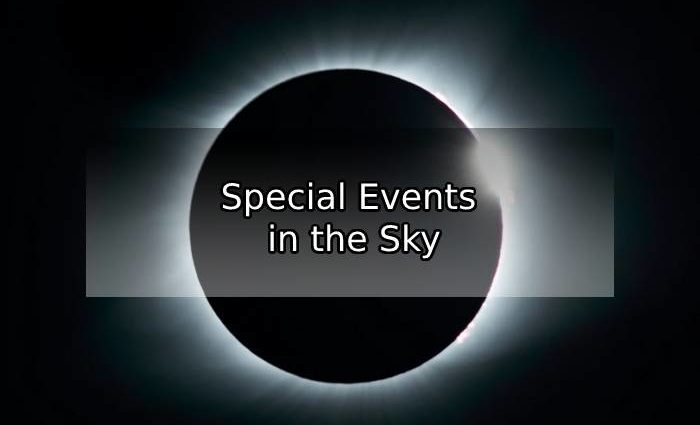Most celestial objects can be seen on any given night, but some of the most spectacular events occur only rarely, and you’ll need to be well prepared in order to observe them.
Table of Contents
Lunar Eclipses

When the Moon is exactly on the opposite side of the Earth from the Sun (in the Earth’s shadow), sunlight passing through the Earth’s atmosphere will cast an eerie, reddish glow on the surface of the Moon. This event is a lunar eclipse and happens only during the Full Moon.
Solar Eclipses

When the Moon passes between the Earth and the Sun, it can block out some or all of the Sun for a moment. These events are called solar eclipses. There are a few varieties of solar eclipses, all of which occur only during the New Moon:
- Total eclipse: In a total eclipse, the silhouette of the Moon completely covers the disk of the Sun. You may be able to see the solar corona, a halo of light surrounding the Sun. Because this totality can only been seen from a few locations on the surface of the Earth during each eclipse, some stargazers travel long distances to experience the best viewing conditions.
- Annular eclipse: In an annular eclipse, the Sun and the Moon are exactly in line, but the Moon’s angular size is slightly smaller than the Sun’s. A bright ring of sunlight will be visible around the silhouette of the Moon.
- Partial eclipse: In a partial eclipse, the Moon covers only a portion of the Sun.
Observe solar eclipses with great care: looking directly at the Sun, even during an eclipse, can damage your eyes permanently. Regular sunglasses will not protect you, as they don’t filter harmful infrared light. Only a solar filter allows you to view an eclipse safely; you can also view an eclipse indirectly using a pinhole camera (a cardboard box with a small hole in it). NASA’s Eclipse Home Page describes how to make one and also provides a wealth of other information about when and where to view eclipses.
Occultations and Transits
Occultation occurs when one celestial object passes directly in front of another. (Technically, solar and lunar eclipses are occultations.) Occultations of planets or the Moon passing in front of stars are neat to observe but require good planning: you can find a list of upcoming occultations on the website of the International Occultation Timing Association. Transits are occultations in which a smaller object passes in front of a larger one, such as Venus or Mercury passing in front of the Sun. These planetary transits look like small black circles moving across the disk of the Sun and, like solar eclipses, must be observed through a solar filter.
Sunspots

Not all stargazing happens at night—the Sun is fascinating to observe during the day if you’re wearing proper eye protection. With a solar filter and small telescope, you can see sunspots (dark splotches on the Sun where the magnetic field is particularly strong). The number of visible sunspots changes over an 11-year solar cycle: you’ll see the most sunspots during solar maximum (while during solar minimum, you may not see any).
Aurorae (Northern and Southern Lights)
Aurorae, stunning displays of colored lights that dance across the sky, are seen only at high latitudes near the poles. Depending on the hemisphere you’re in, aurorae are known as either the aurora borealis (northern lights) or aurora australis (southern lights). Aurorae occur when charged particles from the Sun (the solar wind) hit the Earth’s upper atmosphere near the poles and cause it to glow. You’ll see better aurorae after stronger solar winds.
Manmade Satellites

There are thousands of manmade satellites orbiting the Earth, many of which are too faint to see unaided by a telescope. However, some of the larger ones, such as the Space Shuttle and the International Space Station, are easy to spot: they look like bright, unblinking dots moving steadily across the sky more slowly than meteors but a little more quickly than airplanes.
They’re most visible during the first and last hours of the night, when they emerge from the Earth’s shadow. On any given night, you can expect to see several satellites, and there are several good websites to help you figure out when and where to look (see Stargazing Resources).


Comments are closed, but trackbacks and pingbacks are open.